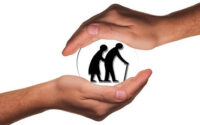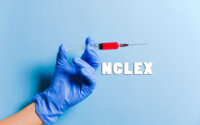GNM Nurse Questions and Answers
Many candidates who are interested in General Nursing and Midwifery Jobs are applying for the GNM Nurse Jobs download GNM Nurse Questions and Answers Papers.
So, the applied candidates can be prepared well for the GNM Nurse Exam by checking the GNM Nurse Exam Syllabus & Test Pattern. We have given the detailed GNM Nurse Syllabus. Also download GNM Nurse Interview Question Paper.
The candidates can refer the model General Nursing and Midwifery Nurse Syllabus & Test Pattern. Download the General Nursing and Midwifery Nursing Assistant Exam Old Question Papers PDF from the below links.
You can just click the links attached below to get the General Nursing and Midwifery GNM Nurse Previous Year Question Papers along with the Answers. GNM is going to release Latest Employment News to recruit GNM Nurse.
Candidates who are going to apply for the General Nursing and Midwifery Nursing Assistant Jobs will be in a search for Previous Papers.
For those candidates, we provided the GNM Previous Papers here. The Exam Competitors can get the Last 10 years Nurse Solved Question Papers on this Page. We are also providing a list of reference books for the preparation of GNM Nurse Exam.
Are you searching for General Nursing and Midwifery Old papers? Then you are at the right place. Here we provided last five years GNM Nurse Sample papers with solutions.
Hence applicants can practice these GNM Nurse Previous Year Question Papers to get experience.
Model Questions and Answers for GNM Nurse Exam
1. Anatomy breaks the human abdomen down into segments called
A. Regions
B. Districts
C. Quadrant
D. Areas
2. Arteries which carry impure blood is
A. Femoral artery
B. Carotid artery
C. Pulmonary artery
D. Coronary artery
3. Primary function of the skeletal system is
A. Form a solid framework
B. Support and protect intemal organ
C. Anchors the skeletal muscles
D. All of the above
4. Total number of cranial nerves in central nervous system are
A. 25
B. 13
C. 12
D. 10
5. Presence of pathogenic bacteria in blood is known as
A. Toxaemias
B. Septicaemia
C. Bacteriamia
D. All of the above
6. People with moderate mental retardation would have an IQ in the range of
A. 10-19
B. 35-54
C. 55-70
D. 20-34
7. The following is not an agency of socializationn
A. Family
B. School
C. Peer group
D. Media
8. Which is not a form of social stratification?
A. Religion
B. Class
C. Caste
D. Gender
9. Patient care model works best when there are plenty of patient but few nurses is
A. Functional nursing
B. Team nursing
C. Primary nursing
D. Total patient care
10. Which of the description is correct for the prone position?
A. Sitting upright
B. Lying on the side
C. Lying on back
D. Lying on abdomen
11. Precautions to be taken before giving ryles tube feeding
A. Aspirate gastric juice prior to feed
B. Directly start feeding without wasting time
C. All of the above
D. None of the above
12. How long do you have to wait for recording oral temperature of the patient if he has just taken hot/cold drinks?
A. 5 minutes
B. 10 minutes
C. 20 minutes
D. 30 minutes
13. Colour coding for oxygen cylinder is
A. Red
B. Black with white shoulder
C. French blue
D. Grey
14. A mother reports that her 4 year old child has been scratching her head recently. Which of the following infestation would the nurse suspect
A. Pinworm
B. Scabies
C. Lice / Pediculosis
D. Hookworm
15. HIV does not cause which of the following illness
A. Anaemia
B. Arthritis
C. Cardiomyopathy
D. Glaucoma
16. Factors which cause Hepatitis A is
A. Blood contact
B. Blood transfusion
C. Contaminated shell-fish
D. Sexual contact
17. A healthy 4 month old child should receive
A. Measles and OPV
B. MMR
C. DPT
D. OPV and DPT
18. India is declared Polio free by WHO in the year
A. 2000
B. 2010
C. 2014
D. None of these
19. Common factors of air pollution are
A. Industrial emission
B. Poor disposal of waste
C. Mining
D. All of the above
20. Common methods of water purification
A. Boiling
B. Filtration
C. Chlorination
D. All of the above
21. The originator of a message for health education is
A. Communicator
B. Audience
C. Channel
D. Message
22. Communication by personal contact is
A. Face- to- face
B. Mass
C. Both
D. None of these
23. Which of the following dietary recommendations may help the client with rheumatoid arthritis reduce inflammation
A. Fish oil
B. Vitamin D
C. Iron rich food
D. Calcium carbonate
24. Half of your diet should be made up of
A. Grains and vegetables
B. Fruits and milk
C. Milk and cheese
D. Fat and sugar
25. Drug of choice for angina Pectoris
A. Aspirin
B. Lasix
C. Nitroglycerin
D. Nifidipine
26. Hormone responsible for rising arterial pressure and improving venous return is
A. Angiotensin I
B. Angiotensin II
C. Epinephrine
D. Renin
27. NSAlDs most often used to treat Rheumatoid Arthritis is
A. Lasix
B. Haloperidol
C. Ibuprofen
D. Methotrexate l
28. Gout pain usually occurs in which of the following location
A. Joints
B. Tendon
C. Long bone
D. Areas of striated muscles
29. Type of Diabetes controlled primarily through diet, exercise, and antidiabetic agents is
A. Diabetes Insipidus
B. Diabetic Ketoacidosis
C. Type I Diabetes Mellitus
D. Type II Diabetes Mellitus
30. A 80 year old man reports with urine retention. Factors which contribute to this clients problem is
A. Benign prostatic hypertrophy
B. Diabetes
C. Diet
D. Hypertension
31. Condition most commonly resulting in Coronary Artery Disease is
A. Artherosclerosis
B. Diabetes Mellitus
C. Myocardial Infarction
D. Renal Failure
32. Charges framed for procedure performed on a client without informed consent is
A. Fraud
B. Harassment
C. Assault and battery
D. Breach of confidentiality
33. Investigation to be done in case of hypothyroidism
A. Liver Function Test
B. Haemoglobin
C. T3, T4 & TSH
D. 24 hours urine for free cortisol measurement
34. Therapies most strongly advocated for treatment of post traumatic stress disorder is
A. ECT
B. Group therapy
C. Hypnotherapy
D. Individual therapy
35. Instruction to be observed when administering a Mantoux test is –
A. Use the deltoid muscle
B. Rub the site to help absorption
C. Read the result within 48 to 72 hours
D. Read the result for checking for a rash
36. Disorder related to dementia is
A. Alcohol withdrawal
B. Alzheimer’s disease
C. Obsessive Compulsive Disorder
D. Post partum depression
37. Client with gestational diabetes is usually managed by
A. Diet
B. Long term insulin
C. Oral hypoglycaemic drug
D. Oral hypoglycaemic drug + insulin
38. Hormones administered for stimulation of uterine contraction is
A. Estrogen
B. Fetal cortisone
C. Oxytocin
D. Progesterone
39. Best technique to monitor the fetus of a third trimester client with diabetes mellitus is
A. USG examination weekly
B. Non Stress Test (NST) twice weekly
C. Daily Contraction Stress Test (CST) at 32 weeks of gestation
D. Monitoring of fetal activity by client weekly
40. Most common cause of anaemia in pregnancy is
a. Alpha-thalassaemia
b. Beta- thalassaemia
c. Iron deficiency anaemia
d. Sickle cell anaemia
41. Fetal position best for birth is
a. Vertex position
b. Transverse position
c. Frank breech position
d. Posterior position of fetal head
42. Important laboratory result for a client admitted to the labour and delivery unit is
A. Blood group
B. Calcium
C. Iron A
D. Oxygen saturation
43. Assessment of the mother made in the immediate post partum period (first two hours) is
A. Blood glucose level
B. ECG
C. Height of fundus
D. Stool test for occult blood.
44. Crowning takes place during which stage of labour
A. First
B. Second
C. Third
D. Fourth
45. A three year old child should be able to perform
A. Ride a tricycle
B. Tie shoelaces
C. Roller skate
D. Jump rope
46. The most common type of cancer in children is
A. Hodgkin’s disease
B. Leukaemia
C. Osteogenic sarcoma
D. Wilm’stumour
47. Intervention recommended for children with CSOM with effusion is
a. Antihistamines
b. Corticosteroids
c. Decongestants
d. Surgical intervention
48. Trained Nurses Association of India was established in the year
A. 1920
B. 1947
C. 1908
D. 1968
49. Action to be taken by Nurse Manager to communicate staff nurse medication error is
A. Incident report
B. Oral report from the staff nurse
C. Copy of the medication Kardex
D. Order change signed by physician
50. Historical research relies on all of the following except
A. Records
B. Diaries
C. Photographs
D. Interview


